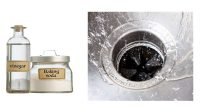Proper electrical weatherhead installation ensures the electricity service runs smoothly without damage or wreckage. Naturally, you must consult a professional service to ensure a smooth process and running.
But it doesn’t hurt to know some of the basic concepts so you understand the whole implementation.

What is an Electrical Weatherhead?
As mentioned before, proper and correct installation is required—and considered crucial—when overhead electrical service is installed within the house. You should see a metal pole rising from the roof with a rounded cap on top of it.
It is where the connection between the service line (from the house) and the utility service line is created and made. The weatherhead’s main function is to prevent water from entering the pipe. It is also responsible for transferring power from the utility to the house.
Electrical Weatherhead Installation
Although it is common for weather heads to be generally mounted to a mast, some may not follow this general installation. Some may be anchored or attached to the wall. A special clamp that secures the entrance conductors directly connected to the weatherhead is also possible.
If this is the case, then it doesn’t require a mast. Be sure to know some general weatherhead installation to know whether your house’s construction is correct. Knowing how to install a Weatherhead will also help.

There are various types and constructions of installation masts. The most common one is the metal rigid electrical conduit, whether the RMC or intermediate IMC type. Some weather heads can be attached or installed with nonmetallic pipe made from PVC plastic.
Read also: How an Anode Rod Protects Water Heater ?
The building authority and the utility company regulate these things, and the regulations may vary from one location to another.
Weatherhead Installation Types and Components
| Installation Type | Description |
|---|---|
| Mast Mounted | Most common installation using a metal pole, typically with a rounded cap on top. |
| Wall Anchored | Utilizes special clamps to secure entrance conductors directly to the Weatherhead without a mast. |
| Nonmetallic Pipe | Uses PVC plastic pipes, an alternative to metal conduits. |
Personal Experience:
In one of my projects, I encountered a unique situation where the Weatherhead had to be anchored to a wall due to space constraints. We ensured a sturdy connection without compromising safety by using a special clamp to secure the entrance conductors. This method is as effective as mounting to a mast, provided all connections are secure and protected from the elements.
There are various types and constructions of installation masts. The most common one is the metal rigid electrical conduit, whether the RMC or intermediate IMC type. Some weather heads can be attached or installed with nonmetallic pipe made from PVC plastic.
The building authority and the utility company regulate these things, and the regulations may vary from one location to another.
Some Crucial Elements
When we talk about the Weatherhead, we talk about the service point and the device’s overall functionality. Because of the Weatherhead’s unique construction, it prevents snow and rain from getting into the mast. So, how does it do so?
- It will cover the overall mast to keep out moisture, including snow and rain.
- Then, it routes the entrance conductor downward, allowing the so-called drip loop. This loop is a slight dip within the service wire. The drip loop will prevent rain from going down the cables and the mast.
From my experience, I always ensure that the drip loop is properly formed during installation. This simple yet effective technique has consistently protected the wires and the mast from water ingress, thereby maintaining the electrical system’s integrity.
Final Verdict
As you can see, the overall construction of the Weatherhead is pretty complicated and complex. You don’t really have to understand it unless you are an electrician.
But such knowledge can be handy if you must deal with the installation. After all, ensuring the installation of the electrical Weatherhead is done properly can give you a slight advantage.


